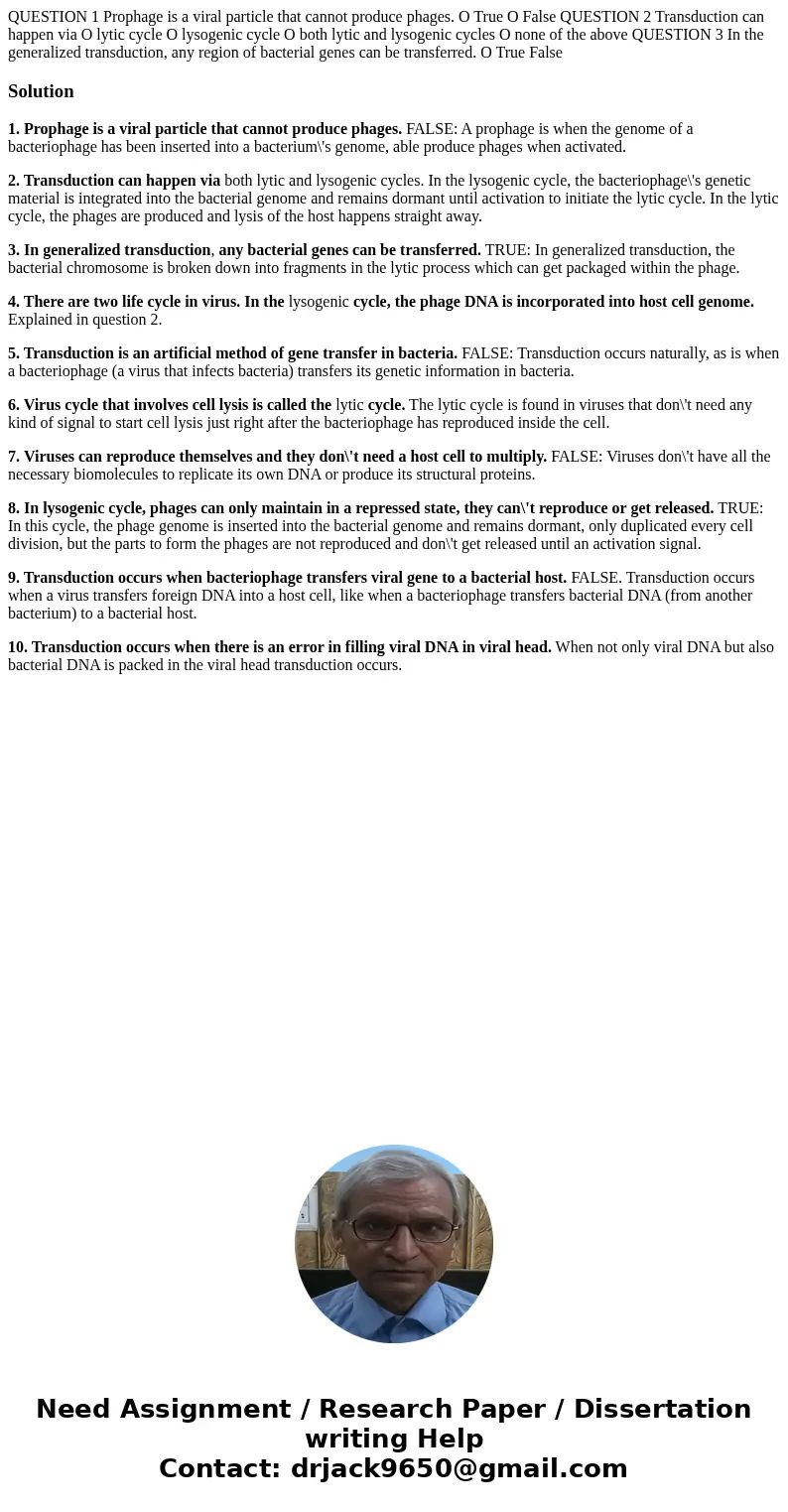QUESTION 1 Prophage is a viral particle that cannot produce
Solution
1. Prophage is a viral particle that cannot produce phages. FALSE: A prophage is when the genome of a bacteriophage has been inserted into a bacterium\'s genome, able produce phages when activated.
2. Transduction can happen via both lytic and lysogenic cycles. In the lysogenic cycle, the bacteriophage\'s genetic material is integrated into the bacterial genome and remains dormant until activation to initiate the lytic cycle. In the lytic cycle, the phages are produced and lysis of the host happens straight away.
3. In generalized transduction, any bacterial genes can be transferred. TRUE: In generalized transduction, the bacterial chromosome is broken down into fragments in the lytic process which can get packaged within the phage.
4. There are two life cycle in virus. In the lysogenic cycle, the phage DNA is incorporated into host cell genome. Explained in question 2.
5. Transduction is an artificial method of gene transfer in bacteria. FALSE: Transduction occurs naturally, as is when a bacteriophage (a virus that infects bacteria) transfers its genetic information in bacteria.
6. Virus cycle that involves cell lysis is called the lytic cycle. The lytic cycle is found in viruses that don\'t need any kind of signal to start cell lysis just right after the bacteriophage has reproduced inside the cell.
7. Viruses can reproduce themselves and they don\'t need a host cell to multiply. FALSE: Viruses don\'t have all the necessary biomolecules to replicate its own DNA or produce its structural proteins.
8. In lysogenic cycle, phages can only maintain in a repressed state, they can\'t reproduce or get released. TRUE: In this cycle, the phage genome is inserted into the bacterial genome and remains dormant, only duplicated every cell division, but the parts to form the phages are not reproduced and don\'t get released until an activation signal.
9. Transduction occurs when bacteriophage transfers viral gene to a bacterial host. FALSE. Transduction occurs when a virus transfers foreign DNA into a host cell, like when a bacteriophage transfers bacterial DNA (from another bacterium) to a bacterial host.
10. Transduction occurs when there is an error in filling viral DNA in viral head. When not only viral DNA but also bacterial DNA is packed in the viral head transduction occurs.

 Homework Sourse
Homework Sourse